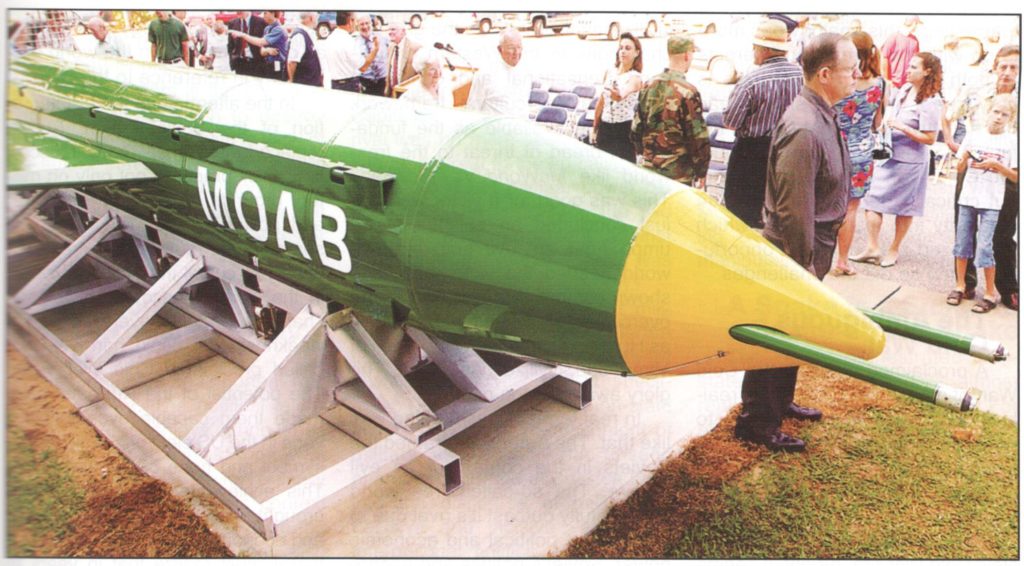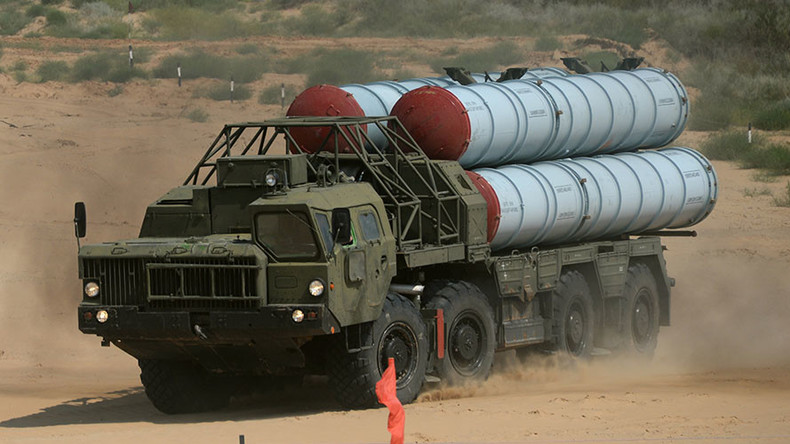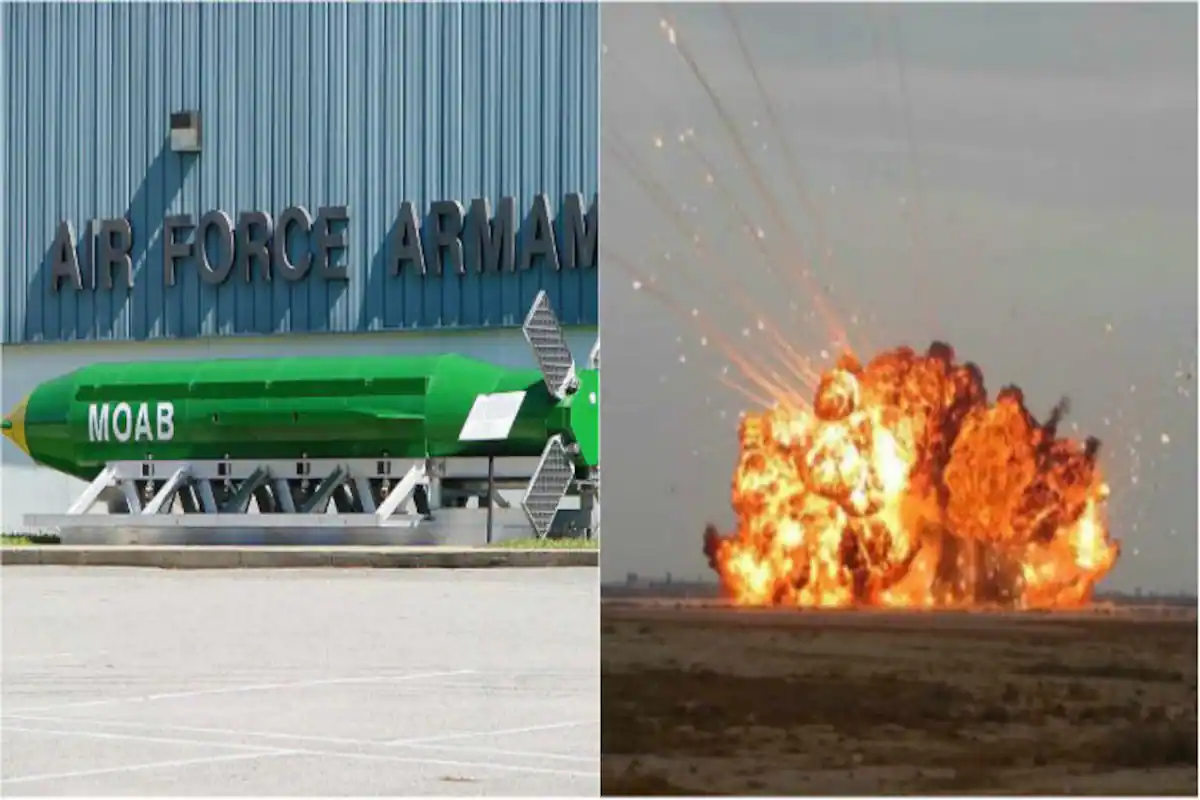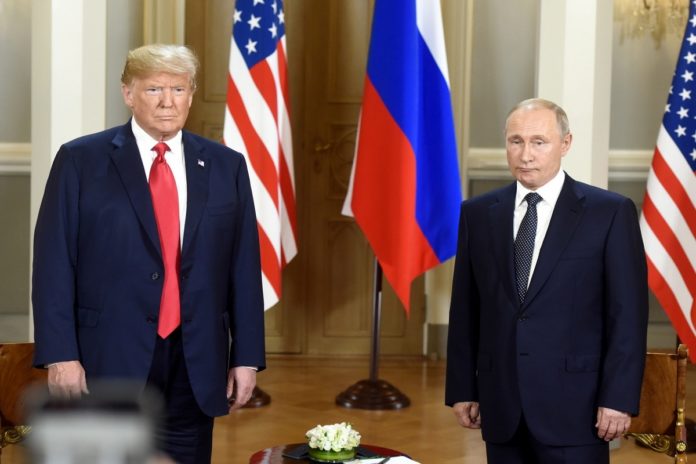Abstract:
This study makes the point that the 21st century is practicing non-kinetic warfare and nations vulnerable to it must overcome their weaknesses or be ready to get consumed. The world at large has witnessed a shift in the co-existence of relations among nations. Traditionally, an ally or the foe had decisive place in the phenomenon of cooperation and competition, respectively. An enemy has a declared status so does the means utilized to undermine its capability were exposed to create fear in the ranks of the opponent’s brinkmanship. Realist tendencies and strategies to outcast strengths of one’s enemy were straightforwardly applied. Military means including framing alliances were applied to squeeze the very possibility of response mechanism vested in enemy’s defense lines. Contrary to this, those who fall in the vicinity of friendship or ally, were to the best helped and taken along. This crafted the era of kineticism, where political affiliations with all its strengths and weaknesses were open and nations have clear manifestation to opt for the best side. This had been the case from First to Third Generations of warfare. Somehow, the Fourth Generation of warfare has faded away the very distinction between an ally and foe. The discourse of ‘national interest’ in the 21st century has fed anxiety and distrust among nations. Today, an ally is not purely taken as a friend rather a mean towards an end. This research takes two traditional opponents as competitors of 21st century who have continued their rivalry with that of changing discourse of warfare. While maintaining their Cold War learning about ‘Mutual Assured Destruction (MAD),’ both have reciprocated into ‘maneuvered battlefield’ with application of non-state actors. This study therefore is deductive in nature and has used the above analogy as theoretical premise to decode the hypothetical assumption that there exists a context of non-kinetic warfare and both US and Russia have entered into ‘maneuvered battlefield’. Secondary data with authors own reflections being student of international politics has driven the analysis and findings.
Introduction
The proliferation of information has altogether trapped regional and global political dynamics so does their ability to rationalize the choices have come under enormous pressure. This has created a faded line between a fact and fabrication. What is right and wrong is no more a matter of concern rather how the medium of information would respond to a particular event, influences the political priorities of majority leaders. The world has changed since the old fashioned ‘politics above economics’ which had failed to generate the relevant discourse of power rather ‘economics above politics’ is today’s reality. Political options that explore only military strength of a nation in response to evaluate the strength of its opponent are becoming gloomy and shady.[1] Today, even without a strong military, a nation could achieve its political and economic interests. Well, that’s all about forces of globalization. Nations striving to achieve the economic prosperity must not feel comfortable when their leaders are surrounded by real politics. The global forces that have been able to flourish their economic goals must be lucky due to unavailability of an environment shaping their threat perceptions. In this situation, a nation needs to learn the rules of the game such as if not cooperation with the world around them then in which context confrontation shall be deemed necessary as an inevitable policy option. Interestingly this analogy has more to do with the competing interests of both USA and Russia. This is very true if one could simply read the narrative of the not too old but just 27 year’s previous interlude, the Cold War. Fascinating though but critical in-terms of shifting the bipolarity into multi-polarity, which maximized the economic opportunities and so did the challenges.

The Ambiguous Cold War
A proclaimed victor of the Cold War, of course the USA; has it really found peace when it comes to rival of its Americanization? Definitely not! In fact, the definition of ‘rival’ has much more expanded from former Soviet Union to Putin’s Russia and Cold War period to New Cold War era. Alright, it seems little difficult to understand. As explained above that in the Cold War there was only the Soviet Union who was considered the main and the only rival to the capitalist and democratic world; I mean the free world. The free world with all its zeal and zest defeated the evil world through a charismatic victory. The literature of international relations mostly written by the forces of free world has fantastically concluded the competition between the two rivals of the Cold War. Francis Fukuyama did an amazing job while calling the shot, ‘the end of history’.[2]
But that was not the end at all. It was a proclaimed end that was envisioned rather concluded. Analogies like new world, an era of free world, era of globalization, or Americanization started floating the literature everywhere from comics to academic writings. An American dream to police the world and to teach the humankind ‘what is civilization?’ was meant to prevail. Let’s take Samuel P. Huntington into discourse, who brilliantly unfolded the civilizational context as the greatest challenges to the Western civilization.[3] Sensational and contextual chronology of cultural framework was made available as the fundamental bread of threat to free-world like McWorld vs. McJihad.[4] This seems good for a victor who has just concluded an episode of triumph from an ‘evil empire’.[5] The world needs the victor as it has shown commitment and courage to overcome the evil and unfortunately as Huntington told the world is full of some bad civilizational evils. The glory awaits for the glorious.
In real terms nothing was like that. The Americans framed the Soviets in the context of an evil empire. The so-called free world successfully outcast it’s rival due to their robust political and economic power. Soviet’s politics and economy was defeated but not the ideology. The Cold War ideology of the both rivals was not other than defeating each other’s political, economic, and military strengths. You can’t defeat ideologies through tangible competitions like wrestling with each other. Ideologies are somewhat defined by religions, inherited by cultures and are vested in the life style of nations. Nations fight and preserve the fundamentals of their ideologies. Ideologies are not like elections that changes the leadership or seasons which changes the fashion. It is a tangible doctrine of fundamentals that set aside all contradictions to its philosophy. Therefore, if capitalism and communism are considered two competing ideologies then Soviet’s only political and economic defeat cannot complete the equation of its ideological defeat. It must include the third pillar that is military defeat which in fact never happened. Even, at the time of Soviet disintegration, its military capability and advancements in associated technology was ranked as one of the best in the world particularly in reference to USA.[6]
In the aftermath of Soviet disintegration, Russia replaced the former. Today, Moscow is far well prepared not only on military grounds but also on economic and political fronts. The country is spreading its muscles required necessary to curtail the Americanization in the world. Moscow is in a good shape to evaluate every single US weakness that could harm the so-called proclaimed Cold War victor. The potential of the Russians have made them capable even to intervene in the US elections, which is the symbol and only hope of the free world. This achievement of Moscow had brought such an immense political and economic challenge for the USA that it must realize that in years to come Russia would be defining and replacing the future of Americanization with its own terms and conditions. It has almost started mingling in the foreign relations of USA by putting confusion and mistrust between Washington’s traditional political and economic allies. The military unit, NATO has shackled its very spirit of protecting the Western interest against the Russians. Rather in view of many European voices, Moscow is considered an important player in the European politics and economics that must be engaged rather annoyed.
The reassertion of Moscow is a threat to Washington. So, what deal America shall ink to neutralize the capacity and capability of the emergence of Putin’s Russia?

The Devils Deal
It is the devils deal. That means terror and fear shall be unleashed on every part of geography that is classified as ‘strategic depth’ to your rival. In a nuclear era an option of kinetic warfare is very limited but opens a great avenue of non-kinetic warfare with possibility of limited war. In non-kinetic warfare, the use of non-state actors is the most cheapest and viable option to destroy the 21st century enemy. It is view of the author that the 21st century will practice this aspect of non-kinetic warfare and nations vulnerable to it must overcome their weaknesses or be ready to get consumed.[7]
The Orchestration of Terror and Politics of Weapons
Weapons play an important role in the warfare. The political leverage that a state enjoys during times of conflict escalation is somewhat also connected with its military muscles. Weapons in this context not only are decisive to change the course of battlefield but they also play incisive role to upgrade the power projection over a militarily weak opponent. This perceptive race stayed at its peak during all times of the Cold War. The arms race between the two rivals submerged the projection of political power into the technological explanations of might, which even lasted in the aftermath of Soviet disintegration into modern Russia. This whole trajectory of power politics between the two dominant rivals highlights the military capability as a static variable and to define their relationship, had also played decisive and incisive role, altogether.
During the Cold War nuclear weapons played both decisive and incisive role to help maintain the status quo between the two bipolar powers. It was the end of the Cold War that deliberately undermined the military variable of strength and replaced it with political and economic variables. The driving force behind projection of politics and economics was the so-called victor of the Cold War, the USA. The American politics redefined the power projection of international relations by emphasizing the growing role of Western politics and Capitalist economy. The traditional rival was no more seen and identified as threat to the so-called free world. No doubt nuclear did played a fantastic role in restraining the two rivals for not going violent against each other and the reason was the mutual assured destruction.[8]
The assumed absence of military variable and its role in international politics stayed in absence for a while but not beyond 9/11, specifically. The orchestration of non-state actor’s threat and refurbishment of military use against the unseen enemy brought the discussion back into the discourse of military as decisive and incisive variable of international politics. USA led the military discourse along with one of the biggest defense alliance, the NATO. The mantra of might was back so did the competitors. The politically and economically defeated rival (Russia) of the USA was no more irrelevant to the emergence of military discourse, which after all has been cherishing the technological inventions since the very inception of the idea of conventional and strategic weapons.
In the post 9/11 episode of military strategy, nuclear weapons have no relevance to deter the enemy (the non-state actors) that moves from one region to another. It is assumed by the author that the so-called phenomenon of non-state actors is a deliberate military project to achieve interests of power politics in the age of globalization. Maintaining the same assertion, it is safely concluded that the movement of non-state actors is managed and controlled by the Washington establishment as a wild card to achieve national interest of the USA in particular and the Western world in general. It started from revenge against the so-called Al-Qaeda in Afghanistan to Weapons of Mass Destruction in Iraq; from humanitarian intervention in Libya to orchestration of ISIS in the Middle East; from responsibility to protect in Syria to exploitation of international laws against weak Muslim regimes; in conclusion nothing else but to impose strategic manipulation of super power.
A Snake is a Snake to a Snake-eating Snake
The newly orchestrated non-state actor phenomenon is almost replica of a ‘snake instinct’. For example, it is the nature of snake that it would bite the master who milks it every day, if hunger comes around. Furthermore, it is the snake that will eat its own flesh at times of acute hunger. After all, ‘a snake is a snake to a snake-eating snake’. The masters feed the non-state actors to stay alive and unleash its poison of terror wherever they were directed and deemed necessary. All this helped the Western political elites and military establishments to drive the phenomenon of terrorism to destabilize the regions that holds the potential to replace or at-least resist the Western world order. One of its enemies (the Soviet Union) was already defeated in the Cold War and now the turn of the rest was enthusiastically planned through the use and implantation of non-state actors. The event of 9/11 provided the required excuse to implement the so-called war against political rivals I mean war against terrorism.
The unfolding events in the aftermath of 9/11 even trapped the Russians, who once remained an active rival and adversary to USA in its essence. Moscow, willingly or unwillingly became part of the post 9/11 Bone Conference allegiance of war against terrorism, which lasted until USA touched Syria, a flash point of Russian interest. From onwards, the politics of non-state actors was no more the only mean in the hands of the West. Moscow joined the league. After all, ‘a snake is a snake to a snake-eating snake’. The mantra of non-state actors is now driven by the traditional rivals against each other. Regional countries did play the orchestra of terror to achieve their limited objectives but at the top both USA and Russia wrestle against each other. From public proclamation of war under realism to role of international organizations under liberalism have been set aside and a new strategy of non-state actors as part of non-kinetic warfare is adopted as determinant of foreign policy.[9]
The puppet show of non-state actors is driven not only on the ground but it is supported continuously through implantation of false and misleading information in the mainstream electronic and print media. Billions of dollars are spent to highlight the horror and compel public opinion to recognize the forces of terror as legitimate threat to humanity. It seems that the whole world became a battleground. People of the free world became slaves of the Western political objectives but not all. States direct victim or competitors of the Western world remained resilient to adopt the orchestration of terror espoused by the Western world. Among many the Russians remained untouched and resilient to US adventurism so did countries like Pakistan who fought everyday to defeat the orchestration of Western terror.

Therefore, the so-called rivalry of the Cold War has now resurfaced under New Cold War. Syria became the flash point for Russians. Since then both Russia and USA have been applying all elements of power including their modern military weapons inventory. Moreover, the 2017 American attack on Syrian air base with 59 cruise missiles manipulated the Russian threshold.[10] The pseudo war theatre needed the plea for American assault that was rationalized as reaction to the chemical attack on innocent Syrian people. In fact, it was a clear message to the non-state actors fighting on behalf of US interests in Syria and against those who fight for Syria and Russia.[11] Installation of S-300PMU anti ballistic missile defense by the Russians in Syria is manifestation of Moscow’s resilience to protect its interest at any cost.[12]
Conclusion
When defense forces of a nation fight war they are protected by all elements of power a state could tangibly exercise. They are sent in the battlefield to fight for the political and economic interests of the country rather thrown in the fire to warm the power politics. Therefore, the commitments with the armed forces are not only legal but emotional and poignant until the context of survival. The theatre of war has changed so did the means of warfare. Today, the theatre of war is selected as an offshore territory and the military as a sole mean of warfare is replaced with the non-state actors. The way defense forces of a nation are suppose to be protected, the same way the non-state actors fighting on behalf of state actors are also sponsored and protected. This demanded construction of a pseudo war theatre that must replicate the real battlefield where the army of non-state actors is fighting and waging a war against the enemies. As a matter of fact the pseudo war theatre must have potential to show its resolve to use weapons of real warfare to create a balance and threat to the opponent forces that uses the same analogy of warfare. Nuclear weapons are not meant to play any role in the pseudo war theatre and in its associated resolve to unleash terror on forces of enemies. If used then it would presumably initiate the reciprocal response that means nuclear for nuclear.[13]
Therefore, to avoid such a backlash of total warfare; the masters of this innovative form of warfare needed to develop a new weapon. Actually, this is sub-conventional guerilla cum insurgency warfare that has mixed all characteristics into one cocktail of warfare. Here, to deter the forces of enemies (who again are the non-state actors), the driving forces must have credible weapons of conventional deterrence to hit them hard even deep in the canyons or mountainous caves.
To fix this paradox of new warfare, USA had developed a non-nuclear conventional weapon; the Mother of All Bombs (MOAB) in 2003. The weapon became operational part of US military strategy when in April 2017 it was used in Afghanistan on ISIS/Daesh hideouts, who got refuge in deep mountainous caves and killed almost its 94 militants.[14] The message was loud and clear that the US is now ready to kill as many as people to achieve its political end-state.[15] The Russians have also made a weapon to equalize US military modernization. They developed Father of All Bombs (FOAB) in 2007 that is mostly recognized as four times more destructive weapon then the American MOAB.[16] The MOAB is the most powerful conventional bomb ever used in combat in terms of explosive material weight. The explosive yield is comparable to that of the very smallest tactical nuclear weapon systems such as Pakistan’s NASR. Following the footsteps of USA, the Russian military stalwarts have also sent hardcore response to non-state actors in Syria, when in September 2017 Moscow dropped FOAB in Deir ez-Zor city of Syria where ISIS militants were operating.[17]

Dropping non-nuclear strategic conventional weapons like MOAB and FOAB by the two political competitors have at-least provided reciprocal threat and appreciation at the same times to their non-state assets. On the other hand, for time being usage of these weapons would stall the pace of non-state actors and their fast moving penetration into regions of turmoil. Though, it is important to notice that it all depends on American Presidential Elections. It is assumed that in absence of Trump, the US military establishment would be quite aggressive to utilize CIA’s non-state assets. So, the gloomy glory of power politics is at the edge of knocking instability and chaos with that of invisible non-state actors.
End Notes
[1] For more details, please see, Herman Kahn, Thinking about the Unthinkable (New York: Horizon Press, 1962), pp. 35-38.
[2] For more details please see, Francis Fukuyama, The End of History and The Last Man (New York: Free Press, 1996), pp. 78-81.
[3] A good civilizational perspective can be find in, Samuel P. Huntington, The Clash of Civilizations and the Remaking of World Order (New York: Simon & Schuster, 1996), pp. 110-125.
[4] Benjamin R. Barber, Jihad vs. McWorld (New York: Ballantine, 1996), pp. 56-57.
[5] Newt Gingrich, “The Evil Empire,” American Heritage, Spring/Summer 2008, Vol. 58, Issue. 4. Available online at: https://www.americanheritage.com/content/evil-empire (accessed on January 10, 2019).
[6] Herman Kahn and Anthony J. Wiener, The Year 2000: A Framework for Speculation of the Next Thirty-Three Years (New York: The Hudson Institute, Inc., 1967), 78-82.
[7] Peter Schwartz, Inevitable Surprises: Thinking Ahead in a Time of Turbulence (New York: Gotham Books, 2003), 23-24.
[8] Robert Lempert, “Can Scenarios Help Policymakers Be Both Bold and Careful?” in Francis Fukuyama (eds.), Blindside: How to Anticipate Forcing Events and Wild Cards in Global Politics (New York: Basic Books, 2007), pp. 180-83.
[9] Steven Bernstein, et al., “God Gave Physics the Easy Problems: Adapting Social Science to an Unpredictable World,” European Journal of International Relations 6-1 (2000), pp. 45-62.
[10] Martin Chulov, “What could the US target in Syria and how is Russia likely to react?,” The Guardian (April 10, 2018), available online at: https://www.theguardian.com/world/2018/apr/10/what-could-the-us-target-in-syria-and-how-might-russia-react (accessed on January 10, 2019).
[11] Pierre Wack, “Scenarios: Uncharted Waters Ahead,” Harvard Business Review (September-October 1985a), pp. 63-5.
[12] For details, please consult, “S-300 missile system: Russia upgrades Syrian air defences,” BBC (October 02, 2018), available online at: https://www.bbc.com/news/world-middle-east-45723503 (accessed on January 10, 2019).
[13] Steven Weber, “Prediction and the Middle East Peace Process,” Security Studies Vol. 6, No.4 (1997), pp. 60-75.
[14] Helene Cooper and Mujib Mashal, “U.S. Drops ‘Mother of All Bombs’ on ISIS Caves in Afghanistan,” The New York Times (April 13, 2017). Available online at:https://www.nytimes.com/2017/04/13/world/asia/moab-mother-of-all-bombs-afghanistan.html?_r=0 (accessed on April 15, 2017).
[15] Steven Viney, “Mother Of All Bombs: What is it and why is the US now using it to fight Islamic State? ABC News (April 16, 2017), available online at: https://www.abc.net.au/news/2017-04-14/explainer-what-is-mother-of-all-bombs/8444818 (accessed on January 10, 2019).
[16] Dave Mosher, “Russia’s ‘father of all bombs’ is 4 times stronger than the ‘mother of all bombs’ for a horrifying reason,” Business Insider (April 14, 2017), available online at: https://www.businessinsider.com/foab-vs-moab-bomb-damage-2017-4 (accessed on January 10, 2019).
[17] Joseph Trevithick, “Rumors Fly That Russia Has Dropped ‘The Father of All Bombs’ in Syria,” The Drive (September 7, 2017), available online at: http://www.thedrive.com/the-war-zone/14175/rumors-fly-that-russia-has-dropped-the-father-of-all-bombs-in-syria (accessed on January 10, 2019).





